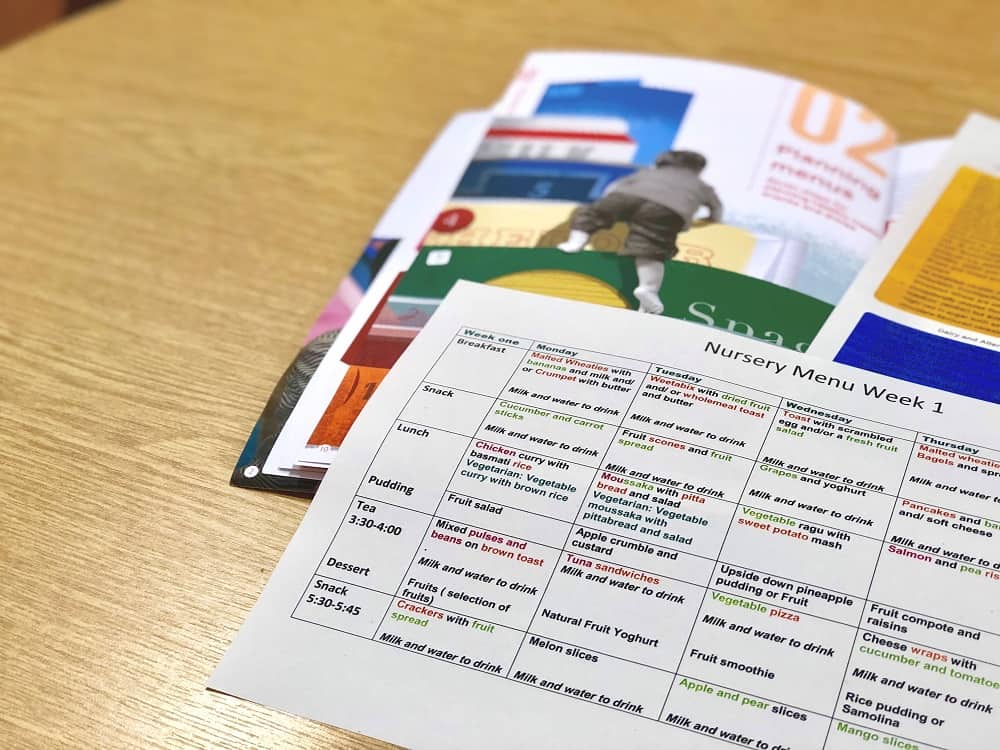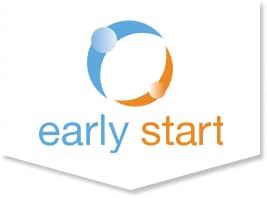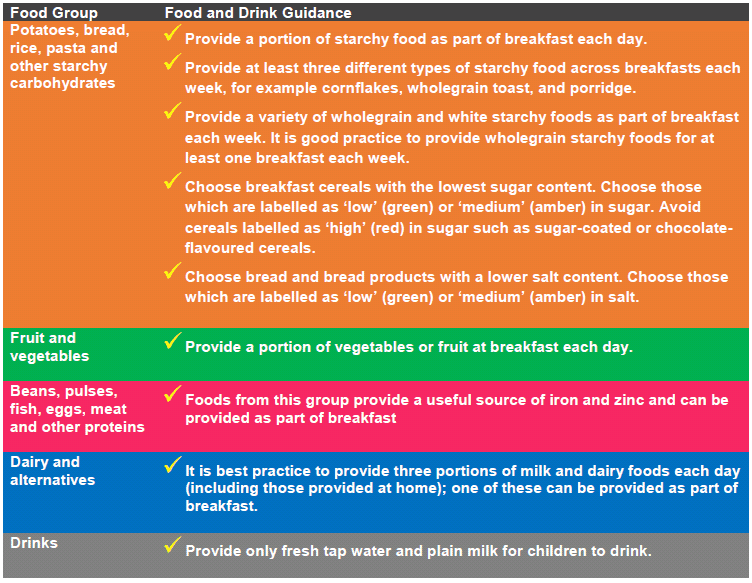Research shows that eating breakfast in your early years setting has positive effects on children’s concentration, supporting their morning learning, as well providing energy until their next snack or mealtime.
It’s important that your setting views breakfast as equally important as other meals and snacks. The morning meal plays an important role in providing children with daily nutrients and energy that they require for growth, play, development and learning. The Eat Better Start Better guidelines (opens in new tab) highlight the energy and nutritional requirements that children should receive across daily meals and snacks provided in early years settings:
- breakfast 20%
- mid-morning snack 10%
- lunch 30%
- mid-afternoon snack 10%
- tea 20%
This leaves 10% for an additional snack at home in evening.
(Note: This is based on a full day care setting and the assumption that lunch is a larger meal and tea is a lighter meal).

Communication with families
It’s important to speak to parents to find out if their children eat breakfast at home. If not, children should be offered breakfast when they arrive at your setting, to ensure they’re not missing this important meal. For children that do have breakfast at home you can share our Family Breakfast Ideas (opens in new tab) blog which has lots of great recipes!
Let’s take a look at some of the key Eat Better Start Better guidelines for breakfast time in your setting:
Here are some of our top tips when providing breakfast in your setting
CEREAL
Cereals are a great option, so ensure you choose breakfast cereals with a low (green) sugar content. A low sugar cereal is one that has less than 5g sugar per 100g (always look at the nutrition information per 100g and not per serving).
Low sugar cereals include:
- Porridge – check out some of our favourite overnight oats recipe here (opens in new tab)!
- Ready Brek
- Wheat biscuits, e.g. Weetabix
- Oat biscuits
- Puffed rice, wheat and oats
- Shredded whole wheat
You may occasionally choose those labelled as ‘medium’ (amber) sugar but avoid cereals labelled as ‘high’ (red) sugar, such as sugar coated or chocolate-flavoured cereals.
Label Reading Guide Per 100g

BREAD
Choose bread or bread products lower in salt, by looking at the back of the ingredients list and try to offer a variety of white and wholegrain. Toast is a quick, easy and nutritious option to serve in your setting. Just be mindful about the toppings that you have available for children. Here are some examples of our favourite toppings in Green and those to avoid in Red.

You can also vary the bread that you offer. For example you could offer:
- Pitta
- Crumpets
- Pancakes – check out some of our favourite pancake recipes here (opens in new tab)!
- Chapatti
Avoid high fat options, such as croissants.

FRUIT AND VEGETABLES
It’s important to offer a portion of fruit or vegetables at each breakfast time. While fruit are often the preferred option, there are lots of ways vegetables can be included too. For example, offer them as a finger food alongside breakfast dishes, such as mushrooms and tomatoes.
Here are some examples from First Steps Nutrition (PDF, 6.8MB), which are all in-line with the EBSB guidelines:

You can find more recipes via:
- Our Early Start Nutrition blogs: Family Breakfast Ideas (opens in new tab), Baby Breakfast Ideas (opens in new tab) and Example Menus (opens in new tab)
- Start for Life website (opens in new tab)
- Action on Sugars Breakfast Recipe booklet (PDF, 3.8MB) which also features our popular Breakfast CousCous
Additional resources for best practice at breakfast times
Book our Menu Planning training (opens in new tab) for more information, advice and support in creating menus to meet children’s requirements.


